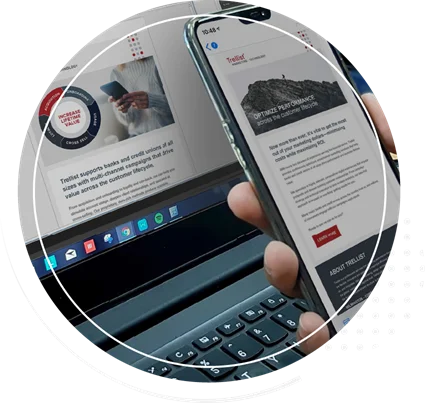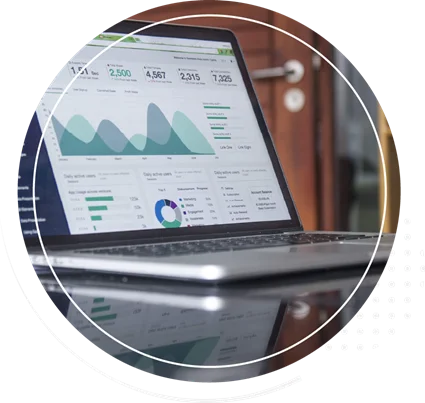In an attempt to mitigate the spread of the Coronavirus, scientists warn there could be a resurgence of COVID-19 for years to come and that physical distancing may need to be put in place until 2022. As we limit in-person interaction and follow stay-at-home orders, the need for an accessible online world has never been more evident.
What does the Coronavirus have to do with accessibility?
As technology grows, users of diverse backgrounds have been increasingly relying on computers, phones and tablets to shop, consume information, and stay connected with co-workers, friends and family.
Physical distancing has forced us to rely on our devices more than ever before. With the news of increased lockdown measures and longer-term physical distancing recommendations, spending on goods from online marketplaces is no longer just a convenience; it may be a necessity.
If your business is hoping to survive and grow amidst coronavirus-induced economic conditions, accessibility is an important aspect of customer experience to consider in your marketing efforts.
Digital accessibility is more important than ever before
As more people are home by mandate or for public safety, consumer-facing industries are especially benefiting from increased online and app order demands.
Your business must ensure your websites and digital tools are accessible to everyone—for people with and without disabilities.
Consider these examples of people who would also benefit from accessible content:
-
Aging population – older people are projected to outnumber younger people. Despite age-related health issues like hearing and vision loss, older people are using smartphones and the internet to stay connected with others, and now need to rely on these devices to reduce health risks.
-
Non-native English speakers – individuals with limited proficiency may prefer receiving their information through the written form, such as via captions on news videos.
-
Situational disabilities – a customer with a broken wrist, or a new parent holding a baby, attempting to place on order on a mobile phone.
-
Temporary disabilities – a remote worker suffering from laryngitis or an ear infection, trying to get healthcare via telemedicine on their computer.
To create more benefits for the most number of people, digital tools must be designed for experiences that are usable by everyone, to the greatest extent possible.
“Accessibility is a good idea but is not necessary” is a myth
Let’s not forget that accessibility compliance is a legal requirement. In 1990, the Americans with Disabilities Act (ADA) was enacted to prohibit discrimination against persons with disabilities in every area of public life. One of the provisions required businesses to “take steps necessary to communicate effectively with customers with vision, hearing and speech disabilities.” For businesses, the required accommodations included interface devices for the visually impaired, qualified interpreters or interpretive tools for the hearing impaired, ramp access for mobility devices like wheelchairs, and more.
In the digital space, ADA compliance means providing web accessibility features and functionalities that allow persons with disabilities to use digital tools effectively.
Over the years, federal lawsuits against businesses for accessibility incompliance have been steadily increasing based on this legal requirement. 2019 itself had a record-breaking 11,000 federal lawsuits filed on the grounds of websites, mobile applications and more. This provides all the more reason to ensure your digital tools are legally accessible to the customers who need it most.
However, accessibility should cater to your entire audience, not just those with a disability. To be truly accessible, you should reach as many of your target audience as possible. As we navigate this stay-at-home economy, we need to remove all obstacles so that all customers can use your digital tools to their greatest ability.
Accessible design improves the experience for everyone
Accessible design ensures information is available for those that need it most, helping the rest have better digital experiences.
Some of the best practices for accessibility are:
-
Ensuring sufficient contrast between text and background colors
-
Using colors to enhance content, not convey critical information
-
Making content easy to navigate using a keyboard
-
Providing descriptive text alternatives for content presented in images, buttons and other non-text elements
-
Providing transcripts and closed captions for video content
-
Having content accessible to screen readers
Want to know how accessible your digital tools are?
Accessible content is not just a solution for better customer experience, it’s a philosophy Trellist follows to produce better experiences for customers as part of marketing strategy. We take into consideration your business goals, budgets, audience and messaging strategy to produce better work quickly, effectively, and efficiently.
Trellist now offers an ADA Audit service. During an audit, our human accessibility experts will review and utilize various testing tools to ensure your website, PDFs, digital graphics and mobile apps comply with international standard, Level AA of Web Content Accessibility Guidelines 2.1. In addition, we’ll help you develop a Digital Accessibility Policy and can perform remediation.
If you are looking to ensure your content is accessible, contact us to learn more. The Audit process starts with a free strategy call with our accessibility experts.
And remember, as we continue to navigate this new normal, our commitment remains the same—to do whatever we can to support you.
In our next accessibility post, we’ll dive into other types of inclusive designs and how they benefit your industry.













